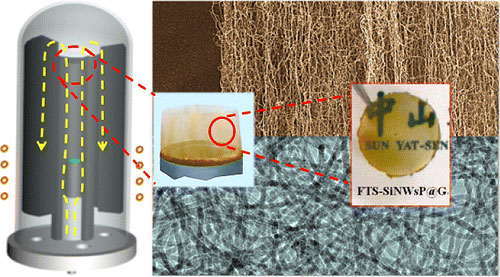| Sep 10, 2013 |
A novel kind of flexible, transparent and self-standing silicon nanowires paper
|
|
(Nanowerk News) Researchers in China have synthesized a novel kind of flexible transparent and self-standing silicon nanowires paper by simple thermal evaporation under the action of the carrier gas flow. It consists of interlocked nanowires with the diameter of ∼10 nm and has good optical transmittance and is able to bend repeatedly without cracking. It therefore has great potential values for flexible transparent electronic and electrochemical applications.
|
|
If the flexible transparent and free-standing paper-like materials that would be expected to meet emerging technological demands – such as components of transparent electrical batteries, flexible solar cells, bendable electronics, paper displays, wearable computers, and so on – could be achieved in silicon, without doubt the traditional semiconductor materials would be rejuvenated. Bulk silicon cannot provide a solution because it usually exhibits brittleness at below their melting point temperature due to high Peierls stress. Fortunately, when the size of silicon materials goes down to nanoscale, they possesses an ultralarge straining ability which results in the possibility to design flexible transparent and self-standing silicon nanowires paper.
|
|
The research findings have been reported in a recent edition of Nano Letters ("Flexible Transparent and Free-Standing Silicon Nanowires Paper").
|
 |
| A simple synthetic strategy by gas flow directed assembly of a unique interlocking alignment of silicon nanowires (SiNWs) produces flexible transparent and self-standing silicon nanowires paper, which consist of interconnected SiNWs with the diameter of 10 nm via simply free-catalyst thermal evaporation in a vertical high-frequency induction furnace.
|
|
On this basis, the team successfully fabricated a kind of transparent and self-supporting binder-free silicon membrane anode via the encapsulation of the silicon nanowires with sufficient graphene. The electrodes exhibit outstanding lithium storage performance with high-storage capacities and good cycling stability. The proposed approach affords a very facile strategy for the fabrication of next generation flexible transparent functional devices.
|

